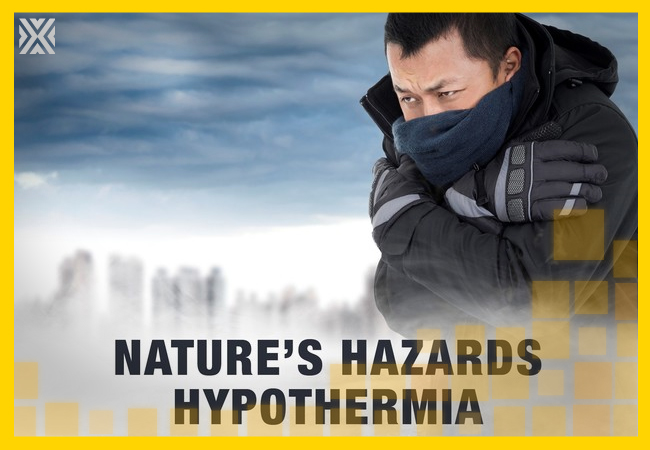Currency
December 15, 2018

WRIGHT-PATTERSON AIR FORCE BASE, Ohio -- Hypothermia is defined as abnormally low body temperature caused by prolonged exposures to very cold temperatures. When exposed to cold temperatures, your body begins to lose heat faster than it’s produced. Lengthy exposures will eventually use up your body’s stored energy, which leads to lower body temperature.

Body temperature that is too low affects the brain, making the victim unable to think clearly or move well. This makes hypothermia especially dangerous, because a person may not know that it’s happening and won’t be able to do anything about it.
Hypothermia occurs most commonly at very cold environmental temperatures, but can occur even at cold temperatures above 40℉, if a person becomes chilled from rain, sweat, or submersion in cold water.
Warning signs for hypothermia in adults would include:
• shivering/exhaustion
• confusion/fumbling hands
• memory loss/slurred speech
• drowsiness
If you notice signs of hypothermia, take the person’s temperature. If it is below 95℉, the situation is an emergency. Get medical attention immediately.
To avoid hypothermia, dress warmly and stay dry during cold weather. Adults and children should wear:
• a hat, because much of your body heat can be lost from your head
• a scarf or knit mask to cover face and mouth to protect your lungs from extreme cold
• sleeves that are snug at the wrist
• mittens _they are warmer than gloves
• water-resistant coat and boots
• several layers of loose-fitting clothing
Wear layers of loose-fitting, lightweight, warm clothing when outside during extremely cold weather:
• Inner layer should be fabrics that will hold more body heat and don’t absorb moisture, with wool, silk or polypropylene being more efficient at holding body heat than cotton.
• Insulation layer of classic fleece, wool or goose down will help you retain heat by trapping air close to your body.
• Outer layer helps to protect you from wind, rain, snow, and preferably be water and wind resistant to reduce loss of body heat.

Body temperature that is too low affects the brain, making the victim unable to think clearly or move well. This makes hypothermia especially dangerous, because a person may not know that it’s happening and won’t be able to do anything about it.
Hypothermia occurs most commonly at very cold environmental temperatures, but can occur even at cold temperatures above 40℉, if a person becomes chilled from rain, sweat, or submersion in cold water.
Warning signs for hypothermia in adults would include:
• shivering/exhaustion
• confusion/fumbling hands
• memory loss/slurred speech
• drowsiness
If you notice signs of hypothermia, take the person’s temperature. If it is below 95℉, the situation is an emergency. Get medical attention immediately.
To avoid hypothermia, dress warmly and stay dry during cold weather. Adults and children should wear:
• a hat, because much of your body heat can be lost from your head
• a scarf or knit mask to cover face and mouth to protect your lungs from extreme cold
• sleeves that are snug at the wrist
• mittens _they are warmer than gloves
• water-resistant coat and boots
• several layers of loose-fitting clothing
Wear layers of loose-fitting, lightweight, warm clothing when outside during extremely cold weather:
• Inner layer should be fabrics that will hold more body heat and don’t absorb moisture, with wool, silk or polypropylene being more efficient at holding body heat than cotton.
• Insulation layer of classic fleece, wool or goose down will help you retain heat by trapping air close to your body.
• Outer layer helps to protect you from wind, rain, snow, and preferably be water and wind resistant to reduce loss of body heat.









